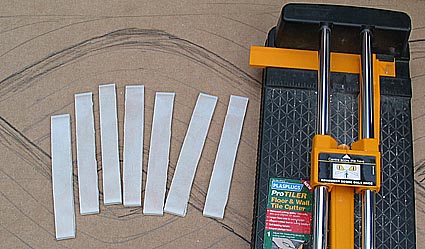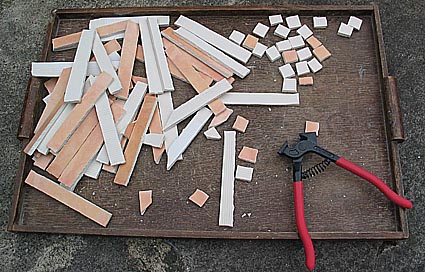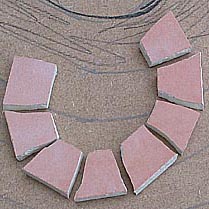
The materials for this project were 15cm (6 inch) and 10cm (4 inch) ceramic wall tiles and fibre board (MDF). For the three main colours of the guilloche, I chose tiles with a mottled appearance. This would give variation in the tesserae, as is seen in Roman mosaics.

The tiles had paler edges which had to be trimmed off first. Then I cut the tiles into strips with a bench tile cutter. The width of the strips was matched to the width of the bands in the guilloche (see design), but with bearing in mind that there would be small gaps between the tesserae (pieces).

Then I cut the strips into small tesserae using handheld tile nippers. This is a useful way of producing ceramic squares for mosaic work.
About 1,500 tesserae were used in the final mosaic.
As well as making squares, I made angled cuts in many of the strips (see below). Wedge-shaped tesserae like these can be fitted back into a straight line or used to make wavy lines or tight curves.





